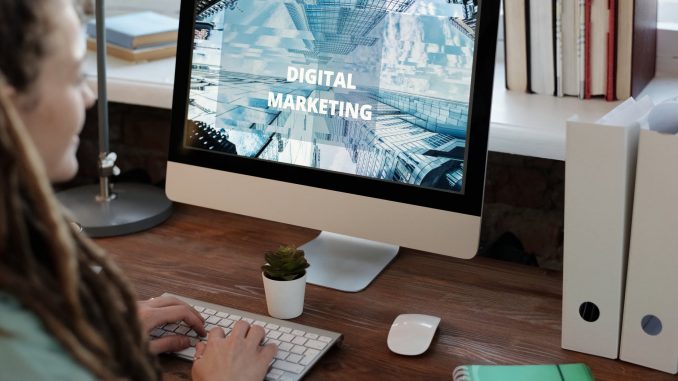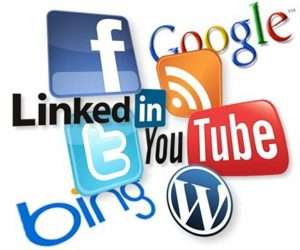
Marketing leaders are focusing on adopting the most effective digital marketing strategies for old as well as new connections with and between customers, employees, business partners, and social influencers. What is the future of digital marketing?
The Future of Digital Marketing: Predictions for 2022

Positive Future Vision
Privacy for people is their topmost priority which digital marketers have to consider. We learn about the future of digital Marketing Technology and predictions for 2022.
Privacy
We all have gone through some unwanted sharing, breach of trust, third-party data we don’t approve of. People are getting annoyed, confused, and distrustful due to this illicit sharing. As more and more stories of hacks go public, we are losing trust. We don’t like it when a company shares our data with another company. Experts say the solution is an investment in privacy to keep customers safe.
According to marketing expert Michelle Thomas “Marketers must be prepared to invest and get the right tech in place to develop its first-party data”. When a customer shares its data with you directly it is first-party data. Customers don’t want the company to share the data which they have trusted with you. Some won’t share data and for that mass, personalization is a viable strategy.
Specialists say one has to double down on building own viewers and communities and grip new types of data like intent-based solutions. In the future, there will be a shift from knowing and exchanging personal information on people to user actions and gestures like clicks, app installs, page views, sign-ups, and so on.
Story (Video / Audio)
The story is a powerful means for building or selling brands and visual stories convey your message effectively. Content creation for storytelling should be strong enough to capture the audience’s attention. The technology part includes video, live streaming, and audio, mainly podcasting.
Digital commerce is suitable and digital development across generations has reached new heights. Markets are waking up to the massive possibility of audio to deliver a highly engaged, targeted audience at scale. Brands that have hogged the limelight by going live have tripled their sales goals during live streaming events in addition to growing their social engagement and follower count. Social shopping is everywhere: Facebook, Instagram, TikTok, Pinterest, etc.
Artificial Intelligence (AI)
AI is seen as an essential aid through the Green Resignation. Artificial intelligence can provide relief to the overworked teams and develop the workforce pouring revenue, building relationships, and abolishing gaps. AI can also add to personalized experience through privacy-safe data.
Personalization does not only mean knowing your customer name, it is about leveraging customer records to build connections with . AI can attain relevance at scale in real-time. Customers believe that brands know what they want to be built on their preferences and data collection.
Imagine a world where one will give an order and it will be delivered by a voice-powered device. Smart speakers and assistants have made people get talking to their phones and a range of new consumer devices like Amazon Alexa and Google Home have appeared on the market. It’s assessed that over half of all search queries are driven by voice search.
With the growth in voice search powered smart devices there will be more chances to market to the people that own them. Amazon spotted this prospect when it started proposing cheaper kindle devices in exchange for agreeing to receive marketing communications. Targeted Alexa ADS are already in the pipeline and other devices will follow soon.
Metaverse
With Facebook/Meta’s noisy multi-billion dollar entry in the metaverse market, it is one of the most important technologies for marketers in 2022. Specialists warn that if one is not using metaverse as part of your mark marketing mix, you are already behind. It does not mean that metaverse is a magic wand but like everything else, it also will take time to develop.
People are not yet clear about what it is. And clear guidelines need to be in place for how marketing and advertising can proceed in such a personal environment and immersive ecosystem. Companies must be able to prove through their promotion campaigns that they are not concluding on this new technologies if they are not yet ready to engage in it. The companies should be cautious not to blow the whole marketing budget on a single technology.
Web3
In marketing nowadays, there is a combination of Web3 technology is reshaping eCommerce like blockchain, cryptocurrency, smart contracts, NFTs, and Distribution Autonomous organizations (DAOs). While some stand for this trend while others are against it.
2022 will be a year of everyday crypto for business and consumers, says the president at Yahoo. As people and enterprises invest in cryptocurrencies, hunt for expert guidance, and conduct studies to ensure that they’re making judicious investment decisions, crypto is set to affect everyday businesses and everyday people alike.
Environment, Social, and Governance (ESG)
We all went through pain during the pandemic period. The division that has been focused on through our society, families, and companies are profound. It is essential for marketers to focus on the environment, social and corporate governance. Companies must disclose their ESG performance to investors, consumers and regulators. Over the last 5 years, we have seen an increase in the consumer demand for sustainable products and social awareness from brands and companies.
Marketing Fortress
We are gradually seeing the rise of enclosed gardens that gather audiences, provide means of advertisement to them and offer chances for brands to consummate those purchases in place. This place is a digital marketing fortress. Rapid digitalization is evident by tech giants like Facebook and Instagram launching shopping capabilities, and social platforms like TikTok rolling out their marketplaces.
Social Media Platforms
A high and increasing percentage of buying decisions are made on social media platforms. Their trade capability is getting stronger. Shoppers who cut their teeth buying on Amazon now expect to be able to buy anything, anywhere and anytime. Social media continues to make a presence in our everyday lives and becomes truly integrated with both on and offline services.
A deeper understanding of each customer as an individual and the chance to offer highly targeted offers and services, as the AI algorithms used in social media grow increasingly sophisticated. Millennials and Gen Z are passionately involved as volunteers. Half of all Non-profit website traffic came from mobile and tablet users.
Cause Marketing
Since 2020 there is a sharp increase in cause marketing. With the global pandemic, there is a sense of community and ecological values in consumers. Marketers can collaborate with non-profit organizations that are actively aiding the community, conserving the environment and usually making the world a better place to live. Companies should make sure that company values are being served by collaborating with non-profit organizations not just for marketing purposes.
For example, if your brand focuses on sustainability and eco-friendly practices then one can build a union with a non-profit organization that has values.
Marketing plans should plan for proving your support and action-based priorities. You should not limit yourself to encouraging non-profit, instead, take extensive measures such as aid or providing sponsorships to get more effective results. It is a partnership that allows both profit and non-profit to reach an entirely new audience. Because promoting nonprofits can earn great benefits if they tie up with the right for the non-profit business as a partner.
Digital Marketing Future
In the past, there was a prevalence of digital marketing events and webinars. In the future, this trend will continue to guide our lives. But with so much content the audience is fed up. For next year digital events will be balanced with hybrid events. The reason for this?
Hybrid events offer a blend of in-person and virtual components that can make them more all-encompassing and viable. This means that hybrid events may become more eco-friendly which speaks straight to the hearts of modern consumers and will most likely bring that investment and engagement back.
Like hybrid events, consumers are increasingly being aware of society and the environment we are surrounded with. Marketers can show people how their business is solving everyday sustainability difficulties such as reducing the waste created by increased shopping delivery and returns.
Google is introducing eco-friendly options on Google Maps, which makes sustainable travel routes the default, while Adidas standard Stan Smith shoes are made from used polyester. It’s time for people out there to take reference from others like using recyclable packaging (H&M) or offering refills (Dove) and be transparent about what happens to returned products.
Staying informed with online marketing trends is fundamental for small and large enterprises. Firms should adjust to the changes in the digital realm to remain significant, evident, and prevalent in their target markets. In the coming year, it is projected that the brands will focus on shopper and environment-centric approaches by endorsing sustainable and eco-friendly practises that highlight community values.
Autor Bio: Michelle Thomas
Marketing Analyst and Blogger in . I’ve been working with web analytics, data collection and analysis for 7 years. I also work in the area of Big Data. My experience helps to be a professional in marketing and related industries.
The post What is the Future of Digital Marketing? appeared first on Bizmanualz Blog.


Leave a Reply